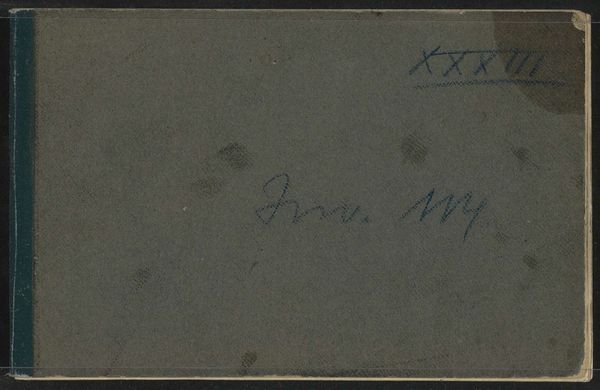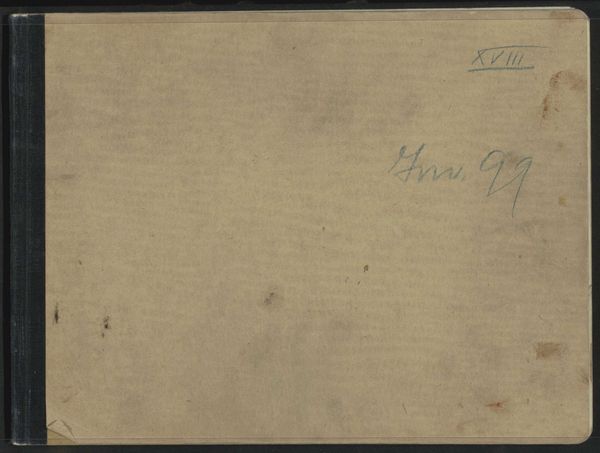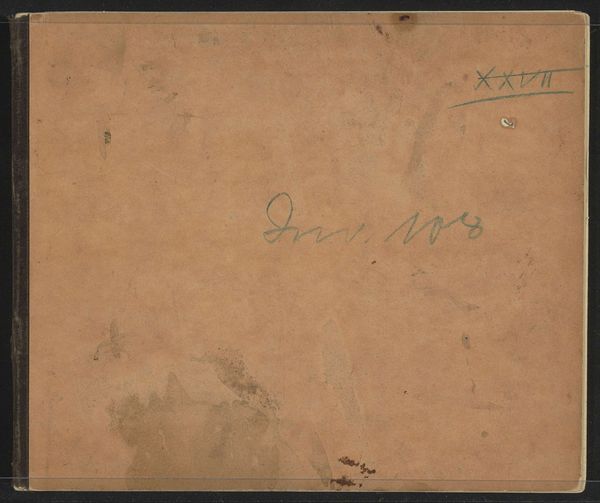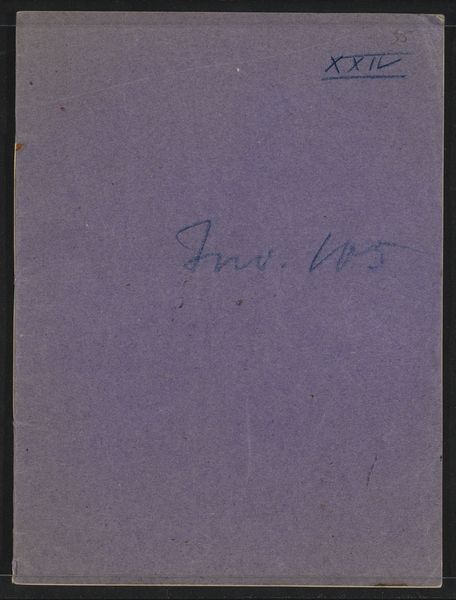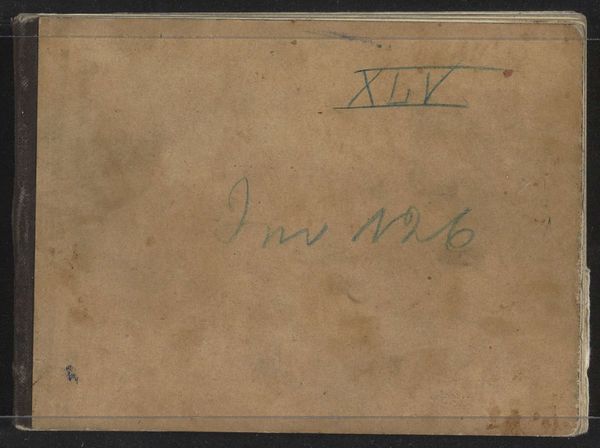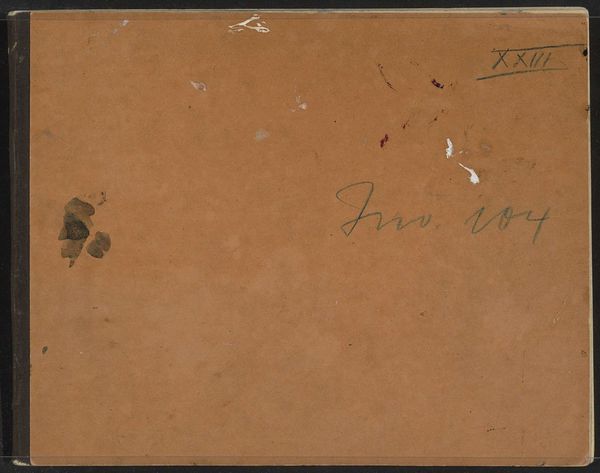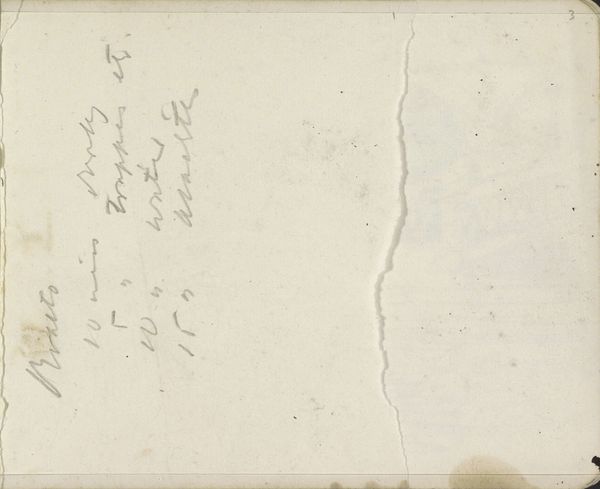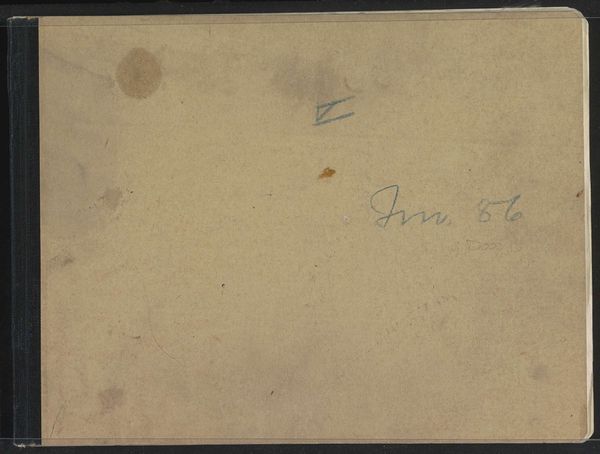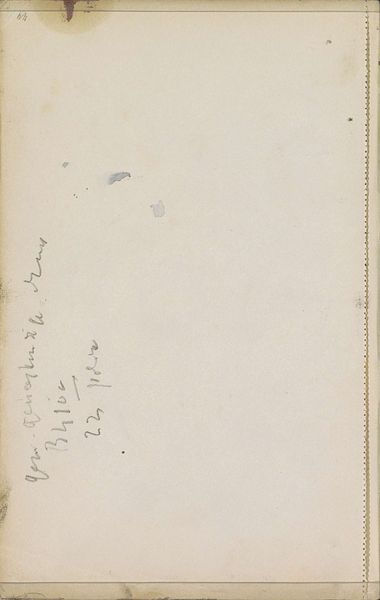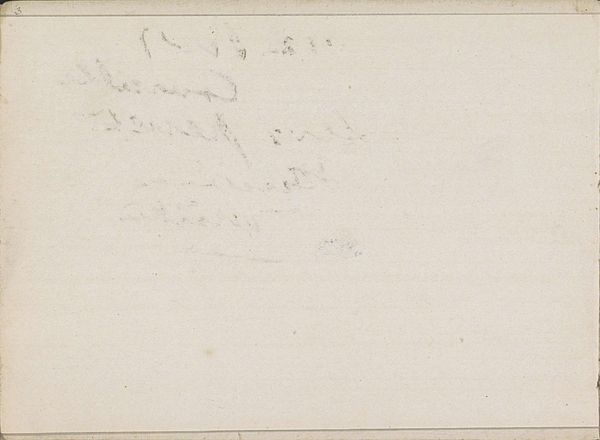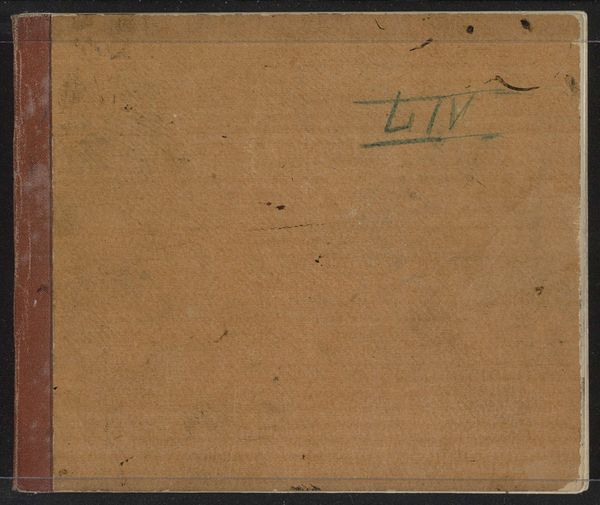
Dimensions: height 220 mm, width 291 mm, thickness 8 mm, width 582 mm
Copyright: Rijks Museum: Open Domain
Curator: Here we have “Sketchbook XXI with 19 leaves” by Isaac Israels, created between 1875 and 1934. It’s a mixed media piece consisting of drawing, pencil, colored pencil, and watercolor on paper. Editor: At first glance, it’s surprisingly intimate, isn't it? More like a personal diary than a display piece. I'm immediately drawn to the visible wear and tear on the cover, signs of handling, and a kind of working-class materiality. Curator: Precisely! These sketchbooks offer invaluable insight into Israels’ process and social context. His quick impressions, made directly onto the paper, often depicted working-class people, women, and scenes of daily life. This focus deviates from more academic subjects, doesn't it? Editor: Absolutely. And looking at the cover itself, with its basic binding and unassuming design, it feels quite radical for its time. Were these sketchbooks intended for public consumption or just a method for him to explore compositions? What narratives did he attempt to create about his surrounding milieu? Curator: That’s the interesting duality. Israels moved comfortably within different social strata, using his art to translate observations across those spaces. So this sketchbook can act as an archive of societal observations. A place for him to analyze different types of labor through drawing. Editor: You can almost feel the artist present in the materials—the pressure of the pencil, the quick washes of color capturing light and movement. How much of it was en plein air? And how was that mobility of painting material affecting art production at the time? Curator: Given the timeframe, Impressionism certainly plays a role. His spontaneous mark-making translates transient, ephemeral moments. These visual notes reflect the experience of modernity and offer views of individuals overlooked by the historical narrative. Editor: Seeing the artist's touch so directly really drives home how art-making is a form of labor. This almost demystifies artistic creation. He is not creating works as separate objects but engaging the physical process. It’s more than just the image; it’s about the active role that objects such as these have on materializing art making in its barest form. Curator: It encourages a reevaluation of both art and the overlooked facets of its historical development. Editor: Indeed. It makes me rethink Israels' social commentary in a more embodied, material way.
Comments
No comments
Be the first to comment and join the conversation on the ultimate creative platform.

